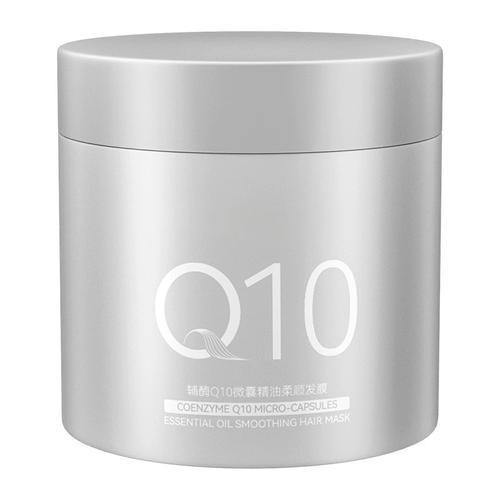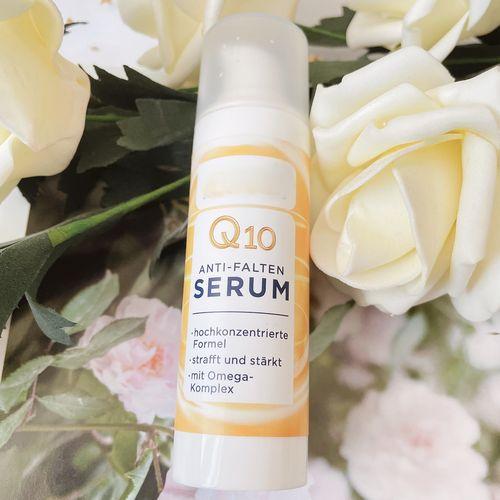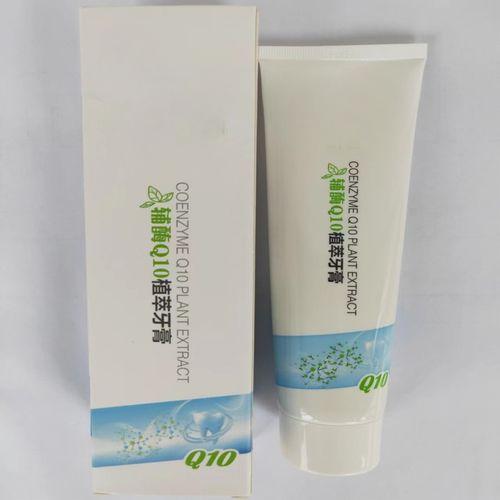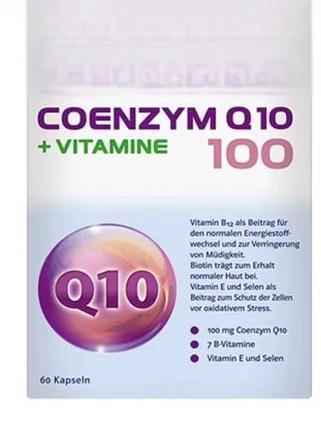Innovative Applications of Coenzyme Q10 Raw Materials in Dietary Supplements and Personal Care
As consumers increasingly prioritize product efficacy and scientifically formulated ingredients, natural compounds offering dual benefits of “cellular energy activation” and “antioxidant protection” are emerging as key innovation drivers in dietary supplements and personal care. Coenzyme Q10 (also known as ubiquinone), a crucial endogenous nutrient in the human body, is gaining significant attention from brands and research institutions due to its well-defined biological mechanisms and broad application potential.
Coenzyme Q10 is a fat-soluble compound residing within human cellular mitochondria, playing an irreplaceable role in cellular energy (ATP) synthesis and electron transport. Simultaneously, it functions as a potent natural antioxidant, helping neutralize free radicals, protect the integrity of cell membranes, and positively regulate the immune system.
Given its core functions in energy metabolism and antioxidant defense, CoQ10 has become an ideal ingredient for diverse product formulations:
★ In dietary supplements, it supports heart health, enhances vitality, and improves antioxidant status;
★ In personal care products, its antioxidant and cell-activating properties boost skin's self-defense and repair capabilities.
Green Spring Technology's Raw Material Advantages: Providing a Reliable Foundation for Product Innovation

Green Spring Technology employs advanced microbial fermentation processes to produce high-purity, all-trans CoQ10 raw materials with the following core advantages:
✨ High Bioavailability
The raw material structure is identical to natural CoQ10 in the human body, ensuring effective recognition and absorption of active ingredients, providing fundamental assurance for product efficacy.
✨ Exceptional Stability
Precise process control ensures excellent chemical stability across diverse formulations, making it suitable for softgels, skincare emulsions, serums, and other end-products.
✨ Scientific Application Support
We provide comprehensive technical support including formulation recommendations, dosage ranges, and functional claim substantiation, empowering brands to develop differentiated, trustworthy health products.
Green Spring Technology is committed to becoming a strategic partner for brand clients in the health ingredient sector. We look forward to collaborating with industry peers to develop more competitive innovative products based on our high-quality CoQ10 raw materials, responding to consumers' ongoing pursuit of “holistic, scientifically effective” health solutions.
1 Application Potential of Coenzyme Q10 Ingredients in Dietary Supplements
As a key cofactor in cellular energy metabolism and a natural antioxidant, CoQ10's value in health applications is increasingly explored. Existing research not only highlights its central role in human physiology but also provides robust scientific evidence for its innovative use in dietary supplements.
1.1 Core Scientific Endorsement for Cardiovascular Health Supplements
Coenzyme Q10's pivotal role in myocardial energy production provides the strongest scientific endorsement for its use in cardiac health supplements. Research indicates that normal maintenance of myocardial function is closely linked to intracellular CoQ10 levels. Supplementing with CoQ10 helps optimize myocardial energy metabolism, offering a clear direction for product claims in heart health dietary supplements.
Based on this, high-purity CoQ10 as a core ingredient can be used to develop dietary supplement products designed to support myocardial vitality and promote overall cardiovascular system health, meeting consumers' precise needs for cardiac nutrition.
1.2 Application Prospects in Metabolic Health
CoQ10 participates in the normal functioning of mitochondria—the cellular powerhouses—and is closely related to metabolic regulation in the body. Its role in mitigating oxidative stress and supporting mitochondrial function suggests potential applications in blood glucose metabolism health. This provides deeper functional value beyond basic nutrition for developing dietary supplements targeting individuals focused on metabolic health.

2 Innovative Applications of Coenzyme Q10 Ingredients in Personal Care Products
As a small-molecule, fat-soluble natural antioxidant, CoQ10's application in personal care products is expanding beyond traditional skincare into emerging fields like oral care, providing robust scientific backing and diverse formulation approaches for product innovation.
2.1 Skincare Products
In cosmetics, CoQ10's core value lies in its exceptional antioxidant capacity and cellular energy-activating properties. Research indicates this ingredient penetrates deeply into the skin, helping neutralize free radicals generated by environmental stressors like UV radiation, thereby supporting the skin's inherent defense system.
Its applications are primarily reflected in the following aspects:
★ Combating Photoaging
Coenzyme Q10 helps mitigate the impact of oxidative stress on skin cells, providing active ingredient support for anti-aging and anti-wrinkle serums and creams.
★ Enhancing Skin Texture
By supporting cellular metabolism, this ingredient improves skin elasticity and radiance, making it suitable for moisturizing, repairing, and other skincare formulations.
Currently, numerous renowned domestic and international brands incorporate CoQ10 into men's skincare and anti-aging creams, validating its ingredient recognition and market potential.
2.2 Personal Hygiene and Oral Care
Advancements in ingredient application technology are expanding CoQ10's functionality beyond traditional skincare. In hair care products, its antioxidant properties aid in repairing hair texture and supporting scalp health. Within oral care, its role in promoting microcirculation and tissue health offers new avenues for developing functional toothpastes and mouthwashes that support gum health and maintain oral balance.

2.3 Multifunctional Ingredient Drives Cross-Category Innovation
Coenzyme Q10 demonstrates cross-category application potential in personal care products, spanning from topical skincare to oral health. Its dual identity as a “cellular energy factor” and “antioxidant ingredient” empowers brands to create products that combine biotechnology sophistication with tangible efficacy, meeting consumers' growing demand for “scientifically formulated ingredients” and “multifunctional integration.”
Green Spring Technology's high-purity CoQ10 raw material, with its stable physicochemical properties and broad compatibility, is emerging as an ideal ingredient choice to propel daily chemical products from basic care toward functional and precision upgrades.
3 Synergistic Applications of CoQ10: Innovative Formulation Solutions Empowering Health Product Development
In functional ingredient applications, “synergistic enhancement” is becoming a core strategy for product innovation. As a multifunctional ingredient, CoQ10 demonstrates significant synergistic potential when combined with various nutrients, offering more competitive formulation solutions for dietary supplements and personal care products.
3.1 Energy Metabolism Support: The Scientific Combination of CoQ10 and B Vitamins
Research indicates that CoQ10 and vitamin B1 exhibit synergistic effects in supporting cardiac function. Their combined application helps improve myocardial energy metabolism, offering valuable formulation insights for developing heart health supplements targeting middle-aged/elderly populations and athletes.
Simultaneously, the synergistic effects of CoQ10 and Vitamin B2 show application potential in neurological health. Research indicates this combination helps alleviate headaches, opening new formulation directions for developing stress management and nerve support dietary supplements for modern consumers.
3.2 Brain Health and Cognitive Support: An Innovative Pairing of Coenzyme Q10 and Rhodiola Extract
In the realm of brain health, the synergistic interaction between CoQ10 and Rhodiola extract warrants attention. Experimental studies indicate this combination not only protects nerve cells but also synergistically enhances learning and memory capabilities, providing scientific basis for developing brain health supplements targeting knowledge workers, students, and middle-aged/elderly populations.

3.3 Antioxidant Synergy System: The Classic CoQ10 and Vitamin E Combination
The pairing of CoQ10 and vitamin E represents a classic combination in antioxidant formulations. Research confirms their excellent stability during formulation and reliable safety profile. This combination builds an efficient antioxidant defense system, suitable not only for oral supplements but also providing ingredient support for topical skincare products, jointly protecting cell membrane structures from oxidative damage.
3.4 Application Outlook
Based on this scientific foundation, brands can develop diverse innovative products:
· Complex Heart Health Supplement: Coenzyme Q10 + Vitamin B1
· Neuro-Stress Management Supplement: Coenzyme Q10 + Vitamin B2
· Brain Function Support Supplement: Coenzyme Q10 + Rhodiola Extract
· Comprehensive antioxidant products: CoQ10 + Vitamin E (suitable for supplements and skincare)
As global health consumption demands continue to evolve, CoQ10 has emerged as one of the most promising functional ingredients in dietary supplements and personal care due to its core roles in cellular energy metabolism and antioxidant defense. Its application scenarios are expanding from precision nutrition supporting cardiovascular health to premium skincare dedicated to skin antioxidant protection, offering vast opportunities for product innovation.

As an industry-leading raw material supplier, Green Spring Technology leverages its advanced microbial fermentation technology platform to establish a comprehensive CoQ10 product matrix. This matrix encompasses both active forms-oxidized and reduced (panthenol)-and offers diverse dosage options including water-soluble, fat-soluble, and liposome-encapsulated formulations. This diversified product system enables formulators to make precise selections based on specific application needs:
◆ Oxidized CoQ10 offers stable properties, ideal for conventional supplements and basic skincare products
◆ Reduced ubiquinol delivers superior bioavailability, suitable for high-performance product development
◆ Water-soluble formulations expand application possibilities in beverages, serums, and other formulations
◆ Liposome technology further enhances ingredient targeting and bioavailability
Green Spring Technology is committed to providing clients with:
★ Scientific Formulation Support
Providing blending recommendations based on distinct morphological characteristics
★ Application Scenario Optimization
Recommending optimal raw material forms for specific dosage forms
★ Efficacy Validation Data
Delivering key bioavailability and stability parameters
We look forward to collaborating with industry partners to explore innovative applications of Coenzyme Q10 in health products. Grounded in science and anchored in quality, we aim to create more valuable health solutions for consumers and propel the industry toward new heights. Contact us at helen@greenspringbio.com or WhatsApp: +86 13649243917.
References:
[1] Zhao Meifa. Important API-Coenzyme Q10[J]. Fine and Specialty Chemicals, 2001, 9(22): 6-8.
[2] Wu Mengmeng. Effect of coenzyme Q10 on experimental periodontitis in rats[D]. Hebei Medical University, 2011.
[3] Bao Fuquan, Bao Zhaoxia, Xia Shiyi. Treatment of recurrent oral ulcers with coenzyme Q10[J]. Clinical Medicine, 2012, 32(4): 99-100.
[4] Liu Wenli. Observation on the efficacy of coenzyme Q10 in the treatment of angina pectoris[J]. China Modern Pharmaceutical Science and Technology, 2004, 3(2): 25-25.25-25.
[5] Ding Jin, Gong Jianbin. Effect of coenzyme Q10 on exercise tolerance in patients with stable angina pectoris[J]. Journal of Cardiovascular Diseases of Chinese and Western Medicine, 2010, 8(004): 398-399.
[6] Bi Junfu. Efficacy of coenzyme Q10 in the treatment of heart failure patients with dilated cardiomyopathy[J]. Journal of Practical Cardiovascular and Pulmonary Vascular Disease, 2012, 20(11): 1813-1814.
[7] ZHANG Xuesong, SUN Qingyuan. Prospects for the development of coenzyme Q10 in healthcare[J].
-
Prev
The Versatility of Coenzyme Q10: From Dietary Supplements to Personal Care ProductsWhat Is Coenzyme Q10 Used For?
-
Next
Coenzyme Q10 Drives Innovation in Natural Anti-Aging Cosmetics


 English
English French
French Spanish
Spanish Russian
Russian Korean
Korean Japanese
Japanese



